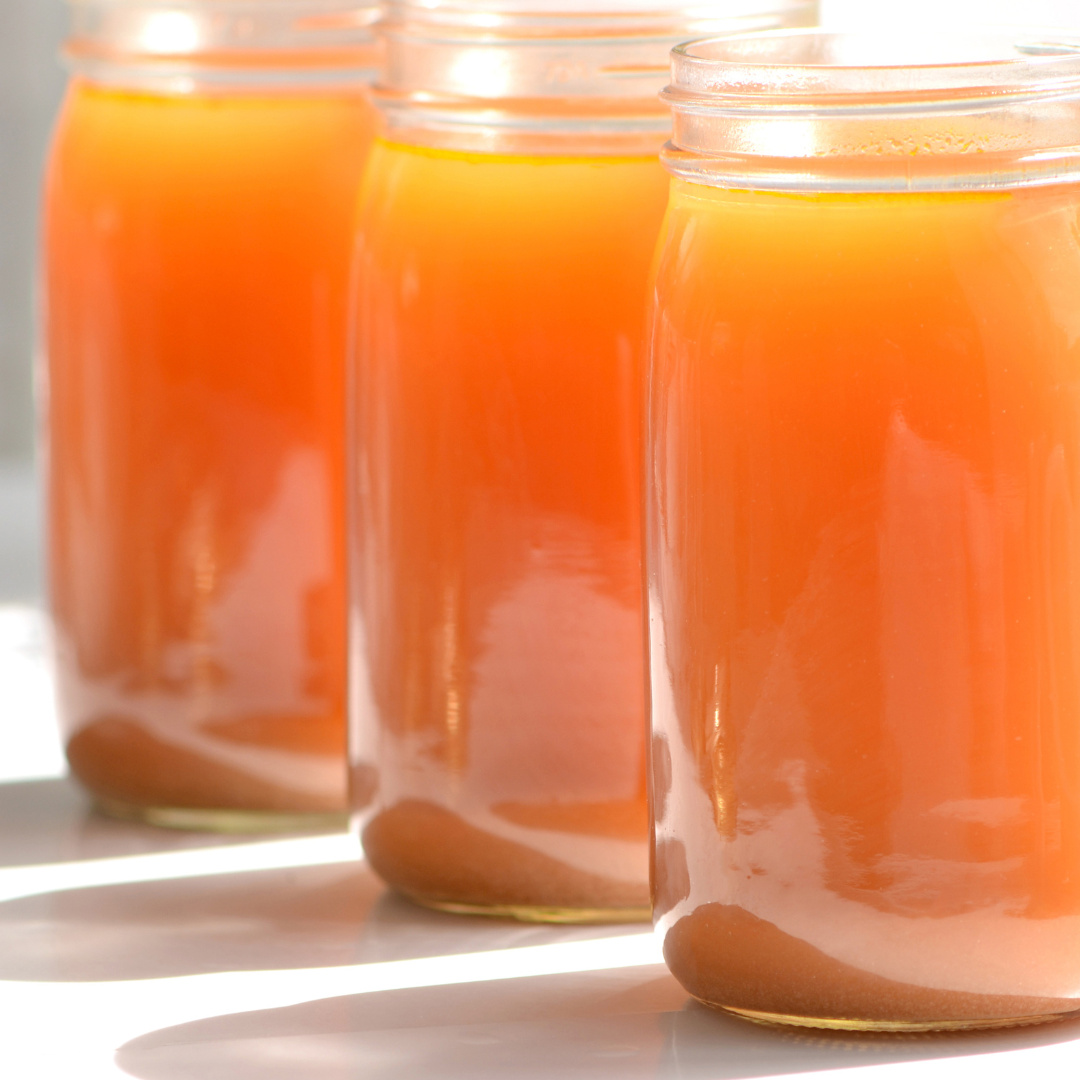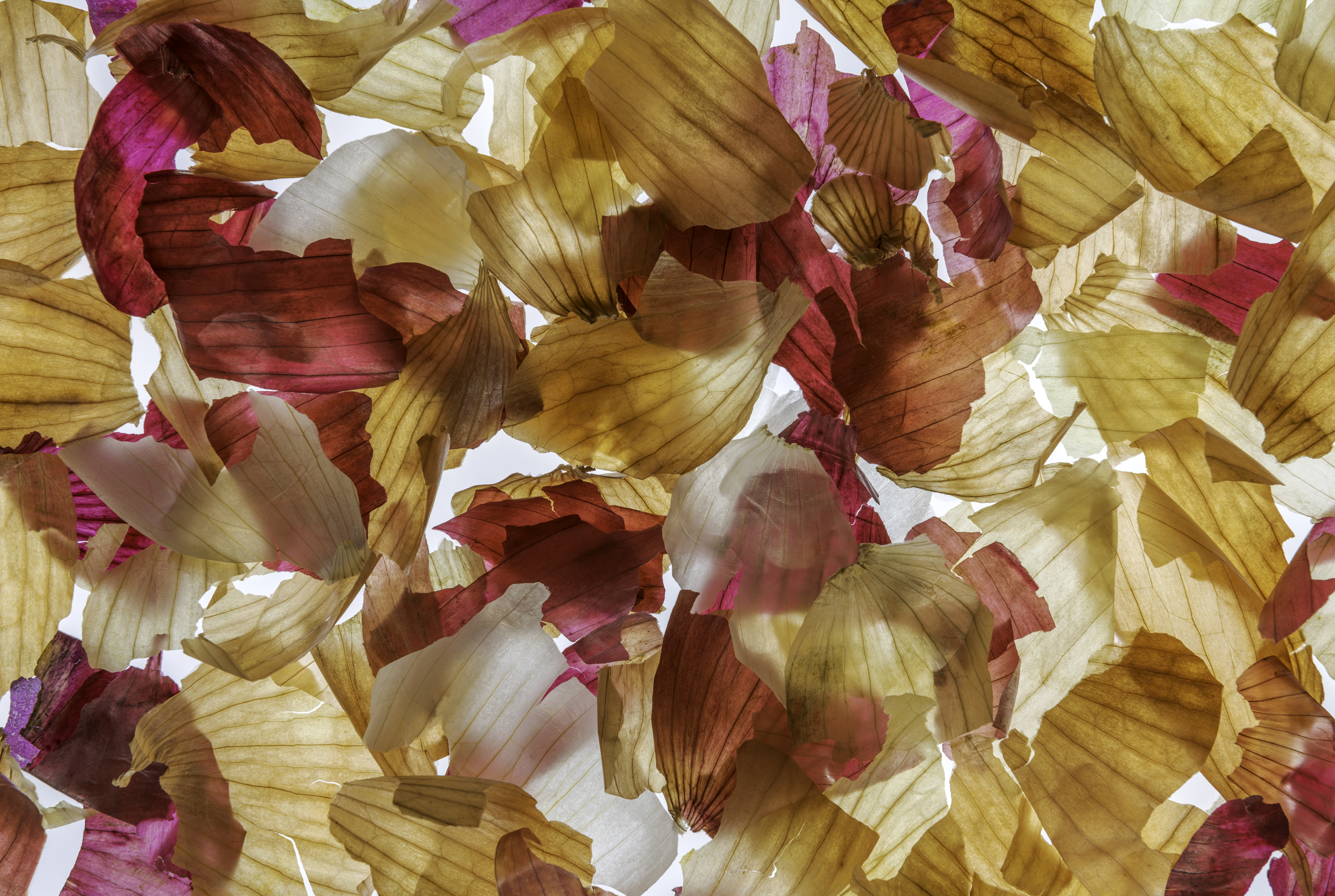Ultimate circular vegetable
Of course, commercial kitchens know countless tricks for reusing their onion waste for ages. Zero waste is a goal in itself for today's restaurateurs, so there is always some kind of broth simmering full of bones, carcasses and… of course, onion skins. When reduced, it produces a nice stock with a very rich umami taste, which in turn forms an excellent basis for delicious culinary sauces.

Valuable residual flow
The residual flow from onion processing mainly consists of the dry outer onion skins, the tail and the first fleshy skins of onions. The closer under the skin, the more interesting components such as dyes, antibacterial substances, moisture-absorbing fibers and antioxidants the onion contains. A good example is quercetin, a bioflavonoid from the outer dry skins, which, in addition to being used as a coloring agent in scientific studies, has also been shown to have many positive health effects. Quercetin is a yellow-colored antioxidant. In the onion, quercetin occurs as a glycoside, which ensures that the dust can be easily absorbed.

Dutch arable farmers harvest an average of one and a half million tons of seed onions per year. Zeeland and Flevoland are the most important regions for processing, packaging and export. 95 percent of Dutch production is exported, the rest remains in the Netherlands. Cleaning, sorting and packaging results in a residual flow of onion tails and onion skins, the outer dry skins of the onion. Until the beginning of the millennium, these were returned to the field by the growers, where the material decomposed and contributed to the organic matter build-up of the soil. However, due to changing regulations, onion skins were seen as waste and suddenly up to 55 euros per ton had to be paid for disposal costs, at the time a 'damage item' of 600,000 euros for the sector.
Waste is raw material
'At that time, the concept of 'waste is raw material' slowly emerged and that is how onion processors came up with the idea of composting the onion skins, because once the material has become compost, it can be returned to the land,' says Gijsbrecht Gunter, chairman of Holland Onion Association. Composting as a solution for the residual flow of onion waste has by now almost disappeared because there are even more interesting sales channels.'We went through the value chain again to see if there were any other solutions. What else has perspective?'
Fermentation
Incorporating onion peel compost and using it against soil-borne fungal diseases turned out to have little effect after research by Wageningen University. This also applies to pressing into energy pellets. Gunter: 'You can make high-density pellets without further additives and they have a high calorific value, but it is simply too expensive and cumbersome. I thought it was cool to do those kinds of tests with chain partners. Especially if it turns out that the material behaves so well in practical tests’. Scientists from Wageningen also did research into the possibilities of fermentation, and at first that didn't seem like an option either. 'But the Dutch onion chain is, as always, very stubborn and started experimenting on a small scale with fermentation installations for onion peels. What did the analyzes reveal? 1 ton of dry onion peels produces no less than 590 cubic meters of biogas, which, with almost 60% methane, is equivalent to 340 m3 of natural gas. If you were to add everything together, you could end up with 8 to 10 million m3 of natural gas equivalent, which is easily enough for 7,000 to 9,000 households', Gijsbrecht Gunter quickly calculates.

Kaaachiing…!
At the moment, a ton of onion peels yields 2 to 5 euros per ton when it goes to the fermenter. If biomass is scarce more and if there is too much supply, it is sometimes collected for nothing. The average onion processor has an annual average of 2,000 tons of dry residual flow, and with a yield of 5 euros per ton, that yields to 10,000 euros. 'For an SME, that is money that has been found, because otherwise it would have cost almost a ton a year for the same volume to be removed, composted and incorporated into agricultural land,' says Gunter.
Even more peel value
In the long term, onion peels may yield even more. So especially in the outer skins there is a high concentration of the natural dye, quercetin. Quercetin is a fat-soluble yellow pigment and a plant compound that belongs to the flavonols, a subgroup of bioflavonoids. Quercetin is one of the most important and well-researched bioflavonoids and a promising versatile phytonutrient for the prevention and treatment of a variety of conditions. It is quite likely that it is also present in the onion as an antibacterial agent to keep out foreign invaders. According to an American dermatologist, making tea from onion peels is also a golden invention. The tea is said to prevent skin aging and provide a youthful glow. Especially the anti-oxidation capacity (capturing free radicals) is an important property of quercetin (Benkeblia, 2005). The outcome of a study completed in 2020 by students at Avans University of Applied Sciences in Breda in the Netherlands showed that the extraction of quercetin can be a profitable process. However, there are still some hurdles to overcome for marketing because of the very specific legislation in that area. It is waiting for an entrepreneur who sees opportunities here. The sector itself prefers to stick to its onion tradition rather than focus as a chemical company on the extraction of vegetable substances and the marketing of special food ingredients or pharmaceuticals.
Upcycling
Upcycling onion peels into a natural textile paint is also a good possibility, because this has been proven for centuries. The Egyptians already did this in full and with the modern trend of making clothes yourself, there is again increasing attention for dyeing wool, linen or other natural fibers yourself. The onion skins give a surprisingly intense bronze color, ranging from light to almost dark brown. Natural pigments are currently in the spotlight again. A few years ago we collaborated with the company Rubia Pigmenta Naturalia in Steenbergen (NL) which successfully extracts natural dyes from the Madder plant (Rubia Tinctorem). 'Insufficiently robust demand and a difficult to bridge price difference with synthetic dyes made the sale of onion peels for a lower grade application more interesting to date, but we certainly remain interested and keep in touch with the researchers with whom we have gained experience about this application', explains Gunter.
Zero waste
In addition to these high-quality applications, a fibrous residue remains after extraction. This is ideal for packaging cardboard, for example. And of course there are always tare onions and bare onions. In addition to sheep feed, the tare is used for the extraction of high-quality onion oil, whereby about 8,000 kilos of tare onions are needed for 1 liter of oil. After the oil extraction, the remaining part is used again as animal feed or for biogas production.
Bald is hip
And then there are the so-called bare onions, which have lost their outer dry jacket on the long way from the field to the onion bale. These onions are sorted and find their way to the food industry, which further processes them into chips, rings or uses them in the countless food applications that have onions as an ingredient. The fact that members of the Holland Onion Association are innovative was proven again when one of the members marketed these sorted, bare onions in a hip packaging as 'The Naked Onion', no peels in the kitchen, no disappointment with rotten spots under the dry peels, long shelf life and super quick to prepare. In this way, the sector continues to think ahead, without throwing away anything valuable and that is precisely what makes the Dutch onion chain unique!
